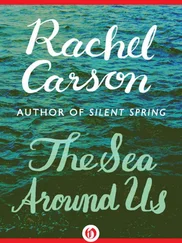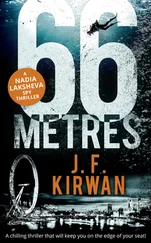Rachel Carson - The Edge of the Sea
Здесь есть возможность читать онлайн «Rachel Carson - The Edge of the Sea» весь текст электронной книги совершенно бесплатно (целиком полную версию без сокращений). В некоторых случаях можно слушать аудио, скачать через торрент в формате fb2 и присутствует краткое содержание. Город: Boston, Год выпуска: 1998, ISBN: 1998, Издательство: Mariner Books, Жанр: Биология, sci_ecology, sci_popular, на английском языке. Описание произведения, (предисловие) а так же отзывы посетителей доступны на портале библиотеки ЛибКат.
- Название:The Edge of the Sea
- Автор:
- Издательство:Mariner Books
- Жанр:
- Год:1998
- Город:Boston
- ISBN:978-0-395-07505-0
- Рейтинг книги:4 / 5. Голосов: 1
-
Избранное:Добавить в избранное
- Отзывы:
-
Ваша оценка:
- 80
- 1
- 2
- 3
- 4
- 5
The Edge of the Sea: краткое содержание, описание и аннотация
Предлагаем к чтению аннотацию, описание, краткое содержание или предисловие (зависит от того, что написал сам автор книги «The Edge of the Sea»). Если вы не нашли необходимую информацию о книге — напишите в комментариях, мы постараемся отыскать её.
A book to be read for pleasure as well as a practical identification guide,
introduces a world of teeming life where the sea meets the land. A new generation of readers is discovering why Rachel Carson’s books have become cornerstones of the environmental and conservation movements. New introduction by Sue Hubbell.
The Edge of the Sea — читать онлайн бесплатно полную книгу (весь текст) целиком
Ниже представлен текст книги, разбитый по страницам. Система сохранения места последней прочитанной страницы, позволяет с удобством читать онлайн бесплатно книгу «The Edge of the Sea», без необходимости каждый раз заново искать на чём Вы остановились. Поставьте закладку, и сможете в любой момент перейти на страницу, на которой закончили чтение.
Интервал:
Закладка:
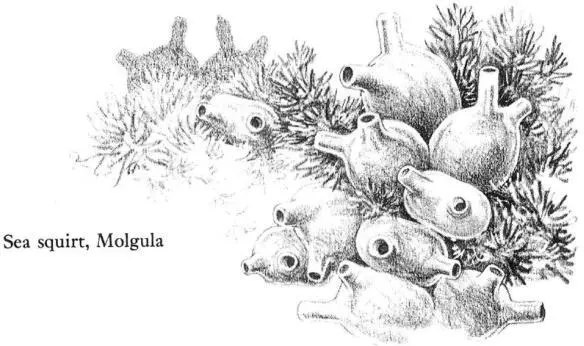
Among the animals almost always inhabiting the holdfasts of the tide-pool kelps are the brittle stars. These fragile echinoderms are well named, for even gentle handling is likely to cause them to snap off one or more arms. This reaction may be useful to an animal living in a turbulent world, for if an arm is pinned down under a shifting rock, the owner can break it off and grow a new one. Brittle stars move about rapidly, using their flexible arms not only in locomotion, but also to capture small worms and other minute sea life and carry them to their mouths.
The scale worms also belong to the holdfast community. Their bodies are protected by a double row of plates forming armament over the back. Under these large plates is an ordinary segmented worm, bearing laterally projecting tufts of golden bristles on each segment. There is a suggestion of primitiveness in the armor plate that is reminiscent of the quite unrelated chitons. Some of the scale worms have developed interesting relations with their neighbors. One of the British species always lives with burrowing animals, although it may change associates from time to time. When young, it lives with a burrowing brittle star, probably stealing its food. When older and larger, it moves into the burrow of a sea cucumber or the tube of the much larger, plumed worm, Amphitrite.
Often the holdfast grips one of the large horse mussels, which have heavy shells and may be four or five inches long. The horse mussel lives only in the deep pools or farther offshore; it is never found in the upper zones with the smaller blue mussel, and it occurs only on or among rocks, where its attachment is relatively secure. Sometimes it constructs a small nest or den as a refuge, using tough byssal threads spun in typical mussel fashion, with pebbles and shell fragments matted among the strands.
A small clam common in laminarían holdfasts is the rock-borer, which some English writers call the “red-nose” because of its red siphons. Ordinarily it is a boring form, living in cavities it excavates in limestone, clay, or concrete. Most of the New England rocks are too hard for boring, and so on this coast the clam lives in crusts of coralline algae or among the holdfasts of the kelp. On British coasts it is said to bore rocks that resist mechanical drills. And it does so without recourse to the chemical secretions some borers use, working entirely by repeated and endless mechanical abrasion with its sturdy shell.
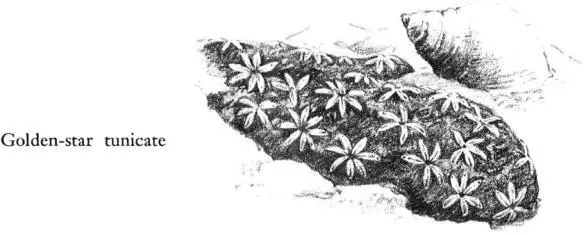
The smooth and slippery fronds of the kelps support other populations, less abundant and less varied than those of the holdfasts. On the flat blades of the oarweeds, as well as on rock faces and under ledges, the golden-star tunicate, Botryllus, lays its spangled mats. Over a field of dark green gelatinous substance are sprinkled the little golden stars that mark the position of clusters of individual tunicates. Each starry cluster may consist of three to a dozen individual animals radiating around a central point; many clusters go to make up this continuous, encrusting mat, which may be six to eight inches long.
Beneath the surface beauty there is marvelous complexity of structure and function. Over each star there are infinitesimal disturbances in the water—little currents funneling down, one to each point of the star, and there being drawn in through a small opening. One heavier, outward-moving current emerges from the center of the cluster. The indrawn currents bring in food organisms and oxygen, and the outflowing current carries away the metabolic waste products of the group.
At first glance a colony of Botryllus may seem no more complex than a mat of encrusting sponge. In actual fact, however, each of the individuals comprising the colony is a highly organized creature, in structure almost identical with such solitary ascidians as the sea grape and the sea vase, found so abundantly on wharves and sea walls. The individual Botryllus, however, is only one-sixteenth to one-eighth of an inch long.

One of these entire colonies, comprising perhaps hundreds of star clusters (and so perhaps a thousand or more individuals), may arise from a single fertilized ovum. In the parent colony, eggs are formed early in the summer, are fertilized, and begin their development while remaining within the parental tissues. (Each individual Botryllus produces both eggs and sperms, but since in any one animal they mature at different times, cross fertilization is insured, the spermatozoa being carried in the sea water and drawn in along with the water currents.) Presently the parent releases minute larvae shaped like tadpoles, with long, swimming tails. For perhaps an hour or two such a larva drifts and swims, then settles down on some ledge or weed and makes itself fast. Soon the tissues of the tail are absorbed and all suggestion of ability to swim is lost. Within two days the heart begins to beat in that curious tunicate rhythm—first driving the blood in one direction, pausing briefly, then reversing the direction of the flow. After nearly a fortnight, this small individual has completed the formation of its own body and begins to bud off other individuals. These, in turn, bud off others. Each new creature has its separate opening for the intake of water, but all retain connections with a central vent for the outflow of wastes. When the individuals clustered around this common opening become too crowded, one or more newly formed buds are pushed out into the surrounding mat of gelatinous tissue, where they begin new star clusters. In this way the colony spreads.
The intertidal zone is sometimes invaded by a deep-water laminarian, the sea colander. It is a representative of those brown seaweeds that flourish in the cold waters of the Arctic, and has come down from Greenland as far as Cape Cod. Its appearance is strikingly different from that of the sea moss and horsetail kelp among which it sometimes appears. The wide frond is pierced by innumerable perforations; these are foreshadowed in the young plant by conical papillae, which later break through to form the perforations.
Beyond the rims of the lowest pools, growing on the rock walls that slope away steeply into deep water, is another laminarian seaweed, Alaria, the winged kelp, called the murlin in Great Britain. Its long, ruffled, streaming fronds rise with each surge and fall as the water pours away seaward. The fertile pinnae, in which the reproductive cells mature, are borne at the base of the frond, for in a plant so exposed to violent surf this location is safer than the tips of the main blade. (In the rockweeds, living higher on the shore and less subject to savage wave action, the reproductive cells are formed at the tips of the fronds.) Almost more than any of the other seaweeds, Alaria is a plant conditioned to constant pounding by the waves. Standing on the outermost point that gives safe footing, one can see its dark ribbons streaming out into the water, being tugged and tossed and pounded. The larger and older plants become much frayed and worn, the margins of the blade splitting or the tip of the midrib being worn off. By such concessions the plant saves some of the strain on its holdfasts. The stipe can withstand a relatively enormous pull, but severe storms tear away many plants.
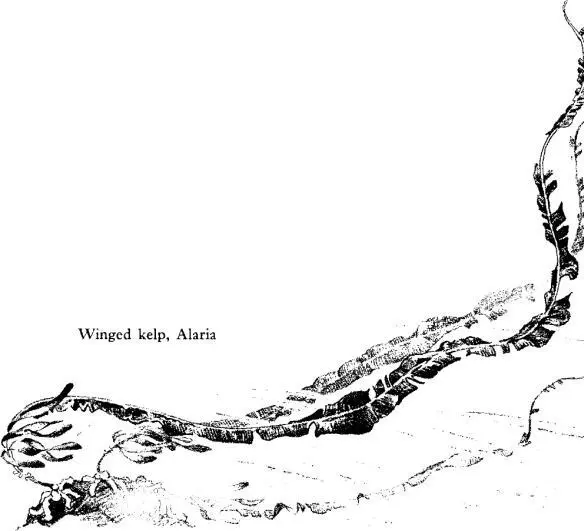
Still farther down, one can sometimes and in some places get a glimpse of the dark, mysterious forests of the kelps, where they go down into deep water. Sometimes these giant kelps are cast ashore after a storm. They have a stiff, strong stipe from which the long ribbon of the frond extends. The sea tangle or sugar kelp, Laminaria saccharina, has a stipe up to 4 feet long, supporting a relatively narrow frond (6 to 18 inches wide) that may extend out and upward into the sea as much as 30 feet. The margin is greatly frilled and a powdery white substance (mannitol, a sugar) forms on the dried fronds. The long-stalked laminaria ( Laminaria longicruris ) has a stem comparable to the trunk of a small tree, being 6 to 12 feet long. The frond is up to 3 feet wide and 20 feet long, but may sometimes be shorter than the stipe.
Читать дальшеИнтервал:
Закладка:
Похожие книги на «The Edge of the Sea»
Представляем Вашему вниманию похожие книги на «The Edge of the Sea» списком для выбора. Мы отобрали схожую по названию и смыслу литературу в надежде предоставить читателям больше вариантов отыскать новые, интересные, ещё непрочитанные произведения.
Обсуждение, отзывы о книге «The Edge of the Sea» и просто собственные мнения читателей. Оставьте ваши комментарии, напишите, что Вы думаете о произведении, его смысле или главных героях. Укажите что конкретно понравилось, а что нет, и почему Вы так считаете.



